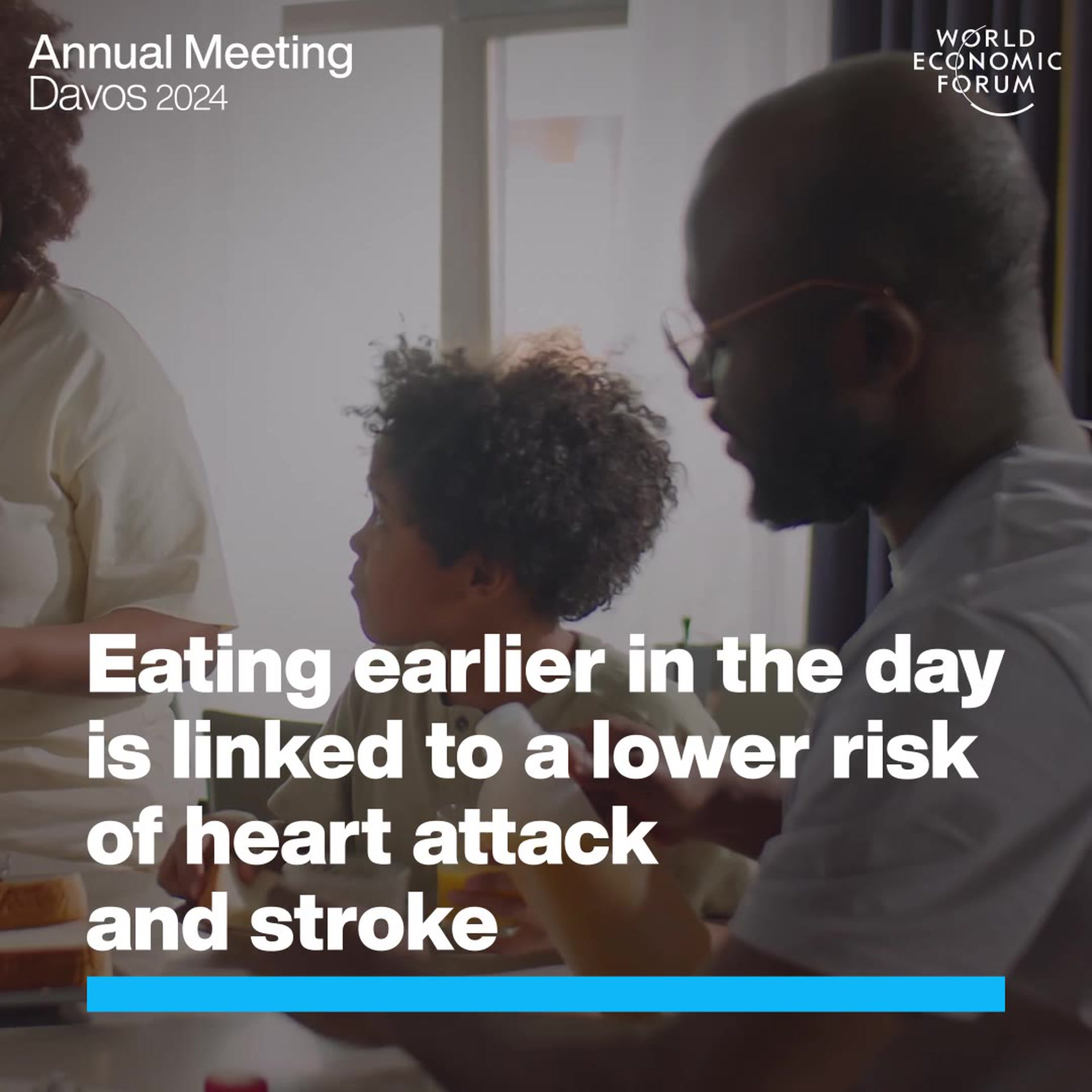11 ways to outsmart your brain and be a better leader

It takes a conscious effort to structure the working day in a more productive way

Get involved with our crowdsourced digital platform to deliver impact at scale
Stay up to date:
Behavioural Sciences
Good decision-making is a key requirement for good leadership.
Ultimately, the success of an organisation rests on the quality of the decisions it makes, but our choices can only be as sound as the inputs and processes we use to reach them. While big data and analytics are increasingly influential, most decision-making is still done by people - and people tend to be both subjective and prone to errors.
We know from behavioural and neuro-science that our brains struggle with information overload. Timothy Wilson, a Professor of Psychology, estimates our brains receive over 11 million inputs – any of the data or stimuli we receive through our five senses - per second, when they can only consciously process 40. Moreover, when we multi-task, this falls even lower.
The Nobel Prize-winning economist Daniel Kahneman points out that our brains evolved so that most of our decision-making is an automatic, unreflected process reliant upon shortcuts and biases. This is useful if you’re in the wilderness, instinctively running away as a rustling leaf or moving shadow hint at a predator, but less so in the modern workplace.
Research show that people get even more biased when they work together in teams, while social pressures, self-silencing, and group conformity significantly all impact the quality of information shared in discussions.
Leaders need to overcome these obstacles to get the best out of themselves and their teams. In our work, we apply behavioural sciences and design techniques to outsmart our brains’ automatic patterns of thoughts. Here are some simple tips to help your organization make better decisions.
Women get interrupted 2.8 times more often than men, by both women and men, and when they do contribute to a team discussion, men may take credit for their ideas - a phenomenon that usually goes unnoticed by their male colleagues. Furthermore, when women voice their views, they are punished with a 14% drop in how competent they are perceived to be. The impact is that women often hold back from speaking up.

As a leader, redesign the way you facilitate meetings. You need all inputs from every person on the team. Create an interruption-free space in a team discussion. Set an amount of time that is only for the person speaking (two minutes, for example) to get their point across. And, throughout the discussion, when an interruption occurs, anyone on the team may call it out (try using a bell, a buzzer, or knocking on the table…some sort of auditory cue to signal the unwanted behaviour). The interrupter doesn’t get to continue, the original speaker continues. Do not create a ‘blame’ culture for the interrupting. Instead use the sound as an interrupter to the automatic and unreflected behaviour of interrupting.

The psychologist Solomon Asch found in his experiments that approximately 74% of people in a group conform to the view of the majority of its members when addressing them. This is due to our deep social need to feel accepted by the group. Neuroscientist Gregory S. Bern discovered that when people in a group conform, the region of the brain where perception is located shows increased activity. His research suggests that how we perceive an issue changes to reflect that of the group. Also, he found that when people in a group offer an opinion that goes against that of the group, they feel anxiety.
To avoid this and get the best input from your team, try this. Ask group members to write down their perspectives - including their most critical views - instead of saying them out loud to the group. This makes group conformity vanish and gives equal access to diverse perspectives. This is especially important as minority, low status group members are likely to hold back more than their peers.
The launch of the Challenger in the U.S. in 1986 was a failure. It exploded 73 seconds after launch, in a tragedy which killed seven people. The investigation committee concluded the reason for the disaster was a lack of dissent, a failure to take data into account that didn’t fit expectations, and Group Think in the decision-making process. No leader wants to see a catastrophe unfold in their own organization, yet in experiments at Harvard, Professor Iris Bohnet finds that her students repeatedly fall into the “trap” of relying on a biased sample of data in the decision-making, similar to what led to the Challenger disaster. Only very few of her students seek more information, as she notes in her book, What Works. Yet even when we’re aware of the pitfalls of Group Think, and are instructed to seek out new data, we can’t be assured of the quality of our decision-making.

To avoid the perils of conformity, try dividing groups into many small and different kinds of groups that work independently of each other. Be sure to compare the outcomes of the different groups.
Another tactic that mitigates Group Think is to frame the same data to the different groups in different ways, for example, presenting a project as a “90% chance” to succeed to one group and a “10% risk” of failure to another group will make a difference in their perceptions, thus behaviours. Also, if you have a stack of background information for the groups, make sure to order it differently for each group to change their “anchor”. We are used to perceiving information relative to something else (the “anchor”, often the first thing people read) - flipping the anchor will flip their perspectives. Again, be sure to compare the outcomes of the different groups.
Leaders should be the last people to contribute ideas in a team discussion, to avoid swaying the group due to their status and power. Similarly, those who are perceived as “experts” on a topic under discussion should also hold back, as others on the team will begin to conform to their view or censor themselves if they disagree. If you find this hard to do, put a note in front of you with “speak last” written on it, or put a piece of tape on your hand to signify taping your mouth closed. When you do speak, give permission for others to critique your views.
Often “conflict” is seen as a negative thing in team discussions, something to be avoided or even punished. While some conflicts can indeed be destructive, others are simply a healthy exchange of different perspectives. Try reframing this type of “conflict” as “constructive discussion” or “positive debate” or “uncovering blind spots” (or whatever term fits your organisation) and communicate to the team that this is acceptable - when it’s done respectfully and with the intent of getting all ideas into the discussion to arrive at the best decisions. You can also prime the brain to perceive contrarian views and critical questions as positive by stating that this task requires ‘critical thinking’, whereas if you use the word ‘getting along’ it will have the opposite effect.
In the book Wiser, Sunstein & Hastie suggest appointing team “devil’s advocates”, specifically asked to critique team recommendations and decisions. However, you need at least two people playing this role simultaneously; with just one person, self-silencing might kick in. The book also illustrates the benefits of inviting another team to act as a “contrarian” team with the purpose of “combating” your team’s plan, strategy, or idea.
To see alternatives and/or to uncover blind spots, ask yourself, “What would others do?” Ask a simple question to yourself or in the team meeting, “What would xx function do to deal with this challenge?” or “If a new leadership team took over now, what would they do?”. Something as simple as this can help your brain to see issue and challenges from a different perspective and open up your mind to other solutions. This helps to mitigate status quo bias, selective attention bias, and confirmation bias.
_____________________________________________________________________
Have you read?
7 inspirational leadership lessons from an adventurer
If you want to be a better leader, try being nicer
_____________________________________________________________________
The rush to make decisions often leads us to fall back on implicit associations, biases, and stereotypes — certainly not the conditions for good decision-making. Instead of going with your gut feeling, design for a two-part decision making process and add in a reviewer. When you have reached a decision, take a break from it (such as a day) and then come back to the decision with all the reasons why it would not work or be the best decision. Also seek others’ input in the same way. Seeing the decision from the flip side allows us to question if we have really found the best solution.
Meeting conditions can impact decision-making. A study of judges found that their decisions were more carefully considered and lenient after having taken a break, whereas prior to breaks they often opted to maintain the status quo and deny parole. Fatigue can interfere with our decisions. This can especially crop up in situations where many decisions are made in sequence, such as in an organisation’s annual appraisal session (which can involve very long, multi-day meetings).
Design your team meetings with frequent breaks that are structurally built into the agenda (such as every two hours). Don’t leave this to chance, and set limits on checking emails during the break - that will only further overload the mind, contributing to increasing fatigue. Give suggestions for what to do, such as ‘take a 15 minute walk”, or “Sit in a quiet room with your eyes closed and focus on your breathing for 5 minutes.” Provide drinks and light snacks to ensure hunger doesn’t eat into decision-making. These things might be seen as trivial or too costly, yet what is more important: a flawed decision and its consequences, or a few minutes of downtime and minor catering expense? Reframe those perceived expenses of time and catering as enablers to create a stronger organisation and bring out the best in yourself and your people.

When we are under time pressure or have too much to do, our rational mind is overloaded, and we fall back on unconscious mode of thinking.
We know from research that one of the major time-stealing activities that most people engage in is email and social media. When we stop working on a task to check emails it takes the brain about 23 minutes to get back into the task at hand.
Help your brain not to do this by designing your messaging systems not to inform you about incoming email or instant messages/chats, and only allow you to check at a certain time, such as right after lunch or late afternoon when you are most often tired. Or take it to the extreme, like Tinna has done for the past 10 months, where she has set up an autoreply stating that she’ll check emails on Friday, asking people to send a text message if it’s urgent. So far, only 8 people have deemed it important enough to do so. This has released a lot of time to do actual work and to be creative and efficient, improving contemplation and decision-making.
Don't miss any update on this topic
Create a free account and access your personalized content collection with our latest publications and analyses.
License and Republishing
World Economic Forum articles may be republished in accordance with the Creative Commons Attribution-NonCommercial-NoDerivatives 4.0 International Public License, and in accordance with our Terms of Use.
The views expressed in this article are those of the author alone and not the World Economic Forum.
Related topics:
The Agenda Weekly
A weekly update of the most important issues driving the global agenda
You can unsubscribe at any time using the link in our emails. For more details, review our privacy policy.
More on Behavioural SciencesSee all
Peter Dizikes
November 27, 2023
Aaron De Smet and Patrick Simon
September 25, 2023
Kate Whiting and Kateryna Gordiychuk
September 6, 2023






